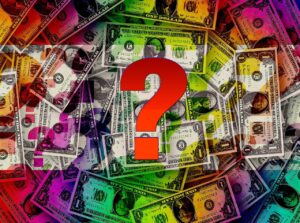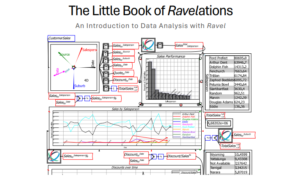In his seminal work The Wealth of Nation, Adam Smith told a story of how barter is inefficient, could only occur when there was a double coincidence of wants, and the existence of money is a result of solving this problem.
To move us from direct exchange to indirect exchange.
Direct exchange is where the person who one set of stuff directly trades with a person who has another set of stuff, and they each want what the other has to offer.
But what if the double coincidence of wants doesn’t happen?
Per Admin Smith, then the direct exchange trade can’t happen.
This problem was solved due to the existence of money, which was invented for just this purpose.
Money allows for easy indirect exchange. A person now simply sells his stuff to someone who wants it, and buys what he does want from someone else.
Sounds reasonable, right? In 1776, this was considered to be a correct description of how many came into existence, because it made sense.
The only problem with this narrative, is in the years since, archaeologists have found zero evidence this actually ever occurred, and much evidence that what did occur is quite different.
How did Neolithic societies conduct commerce?
The main thing to keep in mind here is that Neolithic societies were (by our standards) very simple. A significant difference between now and then is people rarely if ever traveled.
This lack of travel is directly tied into how commerce was conducted, and the subsequent invention of money.
Someone would live a long life and die very near to where they were born. In their entire life they may never travel more than 5 miles away.
This appears to have created a high degree of trust between neighbors. You got to know them really well, because they were the only people you would know, and you would know them for your entire life.
This high degree of trust resulted in a system of commerce based on obligations, promises, and credits. Obligations, promises, and credits in an economic sense are debt.
To illustrate, in the above example, if 30 chickens are worth one cow, and someone wants 30 chickens but doesn’t have a cow, what happened?
The person with 30 chickens handed them over.
Why?
Because his neighbor needed 30 chickens and would pay him back in equivalent value later.
This worked, because neither the creditor nor the debtor were going anywhere.
This informal system of trust, obligations, promises, and credits was in fact the original form of money that human beings ever used.
And it worked.
In cultures all around the world. It appears not only to be the dominate story of how commerce was conducted in early human societies, it seems to be THE story.
Why didn’t this last forever?
Human interactions grew larger and more complex. Villages formed into groups of villages. Groups of villages formed into kingdoms.
NOW you have travel.
People would travel to other regions within the Kingdom (still not very far by modern standards).
And especially, you had armies that traveled.
The King had issues with neighboring Kings. Sometimes those issues led to disagreements. Sometimes those disagreements led to war.
Armies were conscripted to war on neighboring armies raised by other kings.
The King needed the army to be fed and otherwise provisioned, and preferably without having to raise an army of logistics people to do so.
The solution?
Enter, stage left: The existence of money, and taxation
The King now decrees that: A) Silver is now money, and B) He owns all the silver.
Because you know, he’s the King. He can decree stuff like that.
The King pays government employees in silver coins, and requires EVERYONE in the Kingdom to pay him taxes.
If you don’t pay your taxes, you are punished. The punishments for not paying taxes were often severe.
This immediately creates demand for silver coins, as everyone has a tax bill to pay.
Now, everyone has a desire to provide something to the soldiers, as that is where they get the money (silver coins) they need to pay their taxes.
In summary, money came into existence, as an instrument of the state, in order to provision the state with what it thought it needed.
The simultaneous co-invention of taxes is what created demand for the money.
Sadly, the Adam Smith narrative of the existence of money is VERY deeply ingrained in our economics teaching and public discourse, that it’s accepted without question by most people, even though the only evidence supporting the story is “Well, that makes sense”.
The Adam Smith story of the existence of money needs to be relegated to the trash heap of history, along with the ideas of a flat earth, and an earth centric universe.
The man in the video below is Warren Mosler, who is credited with first seeing how modern economies ACTUALLY work. Remarkably (or perhaps not), modern economies work the same way early economies did, and at first glance, it seems a bit bizarre that it took a non economist bond trader to figure it out.



